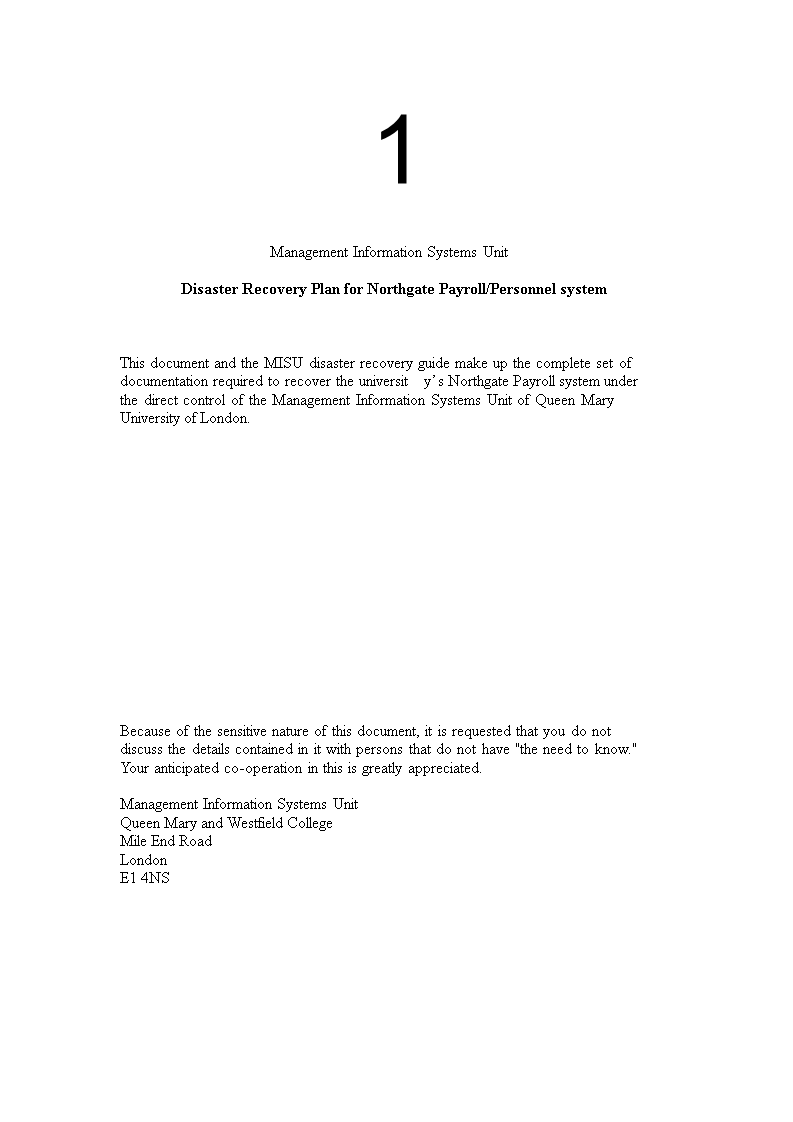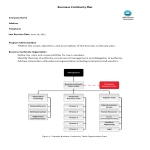Disaster Management Recovery Plan template

I-Save, punan ang mga blanko, i-printa, Tapos na!
How to make a professional Disaster Recovery Plan? What is a disaster management and recovery plan? We have a comprehensive disaster management recovery plan template available for download.
Mga magagamit na premium na format ng file:
.doc- Itong dokumento ay sertipikado ng isang Propesyonal
- 100% pwedeng i-customize
Business Negosyo Projectmanagement Proyekto ng Pagkontrol plan Team Payroll Disaster Recovery Plan Disaster Recovery Plan Example Disaster Recovery Sample Disaster Recovery Plan Examples Disaster Recovery Plan Sample Tba
How to make a professional Disaster Recovery Plan? What is a disaster management and recovery plan? We have a comprehensive disaster management recovery plan template available for download. It includes step-by-step instructions to guide you through the process of creating your own plan. We also provide additional resources to help you tailor your plan to fit your specific needs.
A disaster management recovery plan, often referred to simply as a recovery plan, is a structured and documented strategy that outlines how an organization or community will bounce back from the effects of a disaster or emergency. The primary goal of a recovery plan is to restore essential functions and return to a state of normalcy as quickly and efficiently as possible following a disaster. It is a crucial component of a broader disaster management framework that includes preparedness, response, and mitigation.
Here are the key elements and objectives of a disaster management recovery plan:
- Assessment and Prioritization: The plan typically starts with an assessment of the damage and impact caused by the disaster. This involves evaluating the extent of physical, economic, and social damage and prioritizing recovery efforts based on critical needs.
- Resumption of Essential Services: The plan outlines how essential services, such as healthcare, public safety, utilities, and transportation, will be restored. This may include re-establishing communication networks, medical facilities, and public infrastructure.
- Recovery Team and Responsibilities: It defines the roles and responsibilities of individuals and teams responsible for carrying out recovery efforts. This may include the establishment of an incident command structure to coordinate recovery activities.
- Resource Allocation: The plan identifies the resources required for recovery, including personnel, equipment, funding, and supplies. It outlines how these resources will be sourced, allocated, and managed.
- Communication and Public Information: Effective communication with the public, stakeholders, and the media is vital during the recovery phase. The plan details how information will be disseminated and who will be responsible for communication efforts.
- Continuity of Operations: Organizations must have strategies to ensure their ongoing operations. This may involve relocating to temporary facilities, utilizing backup systems, or adjusting workflows to maintain critical functions.
- Financial Recovery: Addressing financial aspects, including insurance claims, securing financial aid, and managing the budget for recovery efforts.
- Infrastructure and Environment: Repair and reconstruction of physical infrastructure, as well as addressing environmental concerns and hazards, are often part of the plan.
- Community and Social Support: Addressing the physical and psychological well-being of affected individuals and communities is a critical component. This can include providing shelter, medical care, and counseling services.
- Documentation and Reporting: Keeping records and documenting the entire recovery process is essential for accountability, lessons learned, and future planning.
- Testing and Revision: Regularly testing and revising the recovery plan to ensure its effectiveness and adaptability to changing circumstances is crucial.
- Regulatory Compliance: Ensuring that recovery efforts adhere to legal and regulatory requirements, such as environmental regulations, labor laws, and building codes.
A well-prepared Disaster Management Recovery Plan plays a significant role in minimizing the impact of disasters, speeding up recovery, and reducing the disruption to the affected organization or community. It is often developed in conjunction with local authorities, emergency services, and relevant stakeholders to ensure a coordinated and effective response to disasters.
Completing your project management Disaster Recovery Plan was never simpler! Download it now!
DISCLAIMER
Wala sa 'site' na ito ang dapat ituring na legal na payo at walang abogado-kliyenteng relasyon na itinatag.
Mag-iwan ng tugon. Kung mayroon kang anumang mga katanungan o mga komento, maaari mong ilagay ang mga ito sa ibaba.

